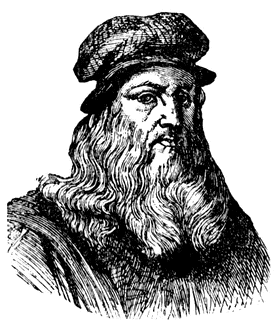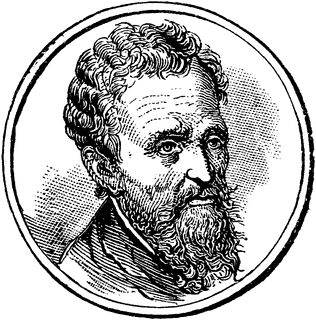The mutant ninja artists!
Leonardo

Leonardo di ser Piero da Vinci ( pronunciation (help·info)) (April 15, 1452 – May 2, 1519) was an Italian polymath: painter, sculptor, architect, musician, scientist, mathematician, engineer, inventor, anatomist, geologist, cartographer, botanist and writer.
Leonardo has often been described as the archetype of the Renaissance man, a man whose unquenchable curiosity was equaled only by his powers of invention. He is widely considered to be one of the greatest painters of all time and perhaps the most diversely talented person ever to have lived. According to art historian Helen Gardner, the scope and depth of his interests were without precedent and "his mind and personality seem to us superhuman, the man himself mysterious and remote". Marco Rosci points out, however, that while there is much speculation about Leonardo, his vision of the world is essentially logical rather than mysterious, and that the empirical methods he employed were unusual for his time.
Raffaello

Raffaello Sanzio da Urbino (April 6 or March 28, 1483 – April 6, 1520), better known simply as Raphael, was an Italian painter and architect of the High Renaissance, celebrated for the perfection and grace of his paintings and drawings. Together with Michelangelo and Leonardo da Vinci, he forms the traditional trinity of great masters of that period. Raphael was enormously productive, running an unusually large workshop, and despite his death at thirty-seven, a large body of his work remains.
Many of his works are found in the Apostolic Palace of The Vatican, where the frescoed Raphael Rooms were the central, and the largest, work of his career. The best known work is The School of Athens in the Vatican Stanza della Segnatura. After his early years in Rome, much of his work was designed by him and executed largely by the workshop from his drawings, with considerable loss of quality.
Michelangelo

Michelangelo di Lodovico Buonarroti Simoni (6 March 1475 – 18 February 1564), commonly known as Michelangelo, was an Italian Renaissance painter, sculptor, architect, poet, and engineer. Despite making few forays beyond the arts, his versatility in the disciplines he took up was of such a high order that he is often considered a contender for the title of the archetypal Renaissance man, along with his rival and fellow Italian, Leonardo da Vinci.
Michelangelo's output in every field during his long life was prodigious; when the sheer volume of correspondence, sketches, and reminiscences that survive is also taken into account, he is the best-documented artist of the 16th century. Two of his best-known works, the Pietà and David, were sculpted before he turned thirty. Despite his low opinion of painting, Michelangelo also created two of the most influential works in fresco in the history of Western art: the scenes from Genesis on the ceiling and The Last Judgment on the altar wall of the Sistine Chapel in Rome. As an architect, Michelangelo pioneered the Mannerist style at the Laurentian Library. At 74 he succeeded Antonio da Sangallo the Younger as the architect of Saint Peter's Basilica. Michelangelo transformed the plan, the western end being finished to Michelangelo's design, the dome being completed after his death with some modification.
Donatello

Donatello was the son of Niccolo di Betto Bardi, who was a member of the Florentine Wool Combers Guild, and was born in Florence, most likely in the year 1386. Donatello was educated in the house of the Martelli family. He apparently received his early artistic training in a goldsmith's workshop, and then worked briefly in the studio of Lorenzo Ghiberti.
While undertaking study and excavations with Filippo Brunelleschi in Rome (1404–1407), work that gained the two men the reputation of treasure seekers, Donatello made a living by working at goldsmiths' shops. Their Roman sojourn was decisive for the entire development of Italian art in the 15th century, for it was during this period that Brunelleschi undertook his measurements of the Pantheon dome and of other Roman buildings. Brunelleschi's buildings and Donatello's sculptures are both considered supreme expressions of the spirit of this era in architecture and sculpture, and they exercised a potent influence upon the painters of the age.